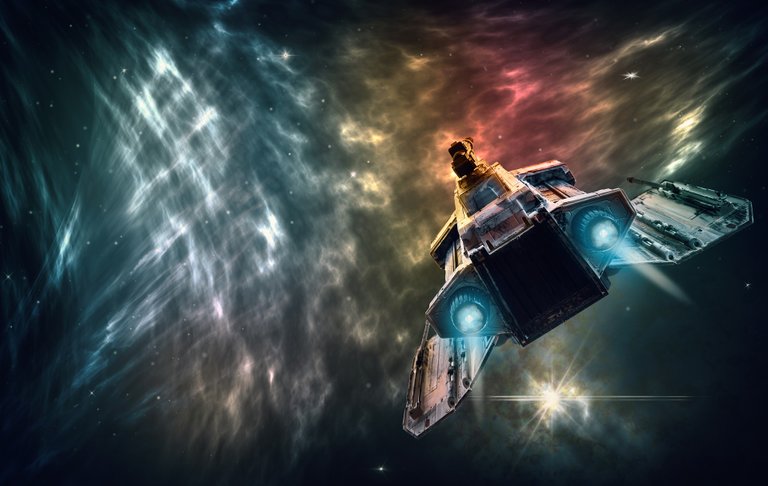For now, fusion is still just a dream. But one day we will have it and it could run spaceships making the Solar system much “smaller”.

Image by Peter Fischer from Pixabay
- Be also sure to check out my other posts and follow me @kralizec and subscribe to my Youtube channel at Kralizec Gaming Youtube Channel
When it comes to fusion energy, sadly the phrase that fusion energy is just 10 years away is still true. But, if one day we could finally get this technology going, perhaps even in our lifetimes, we could not only use fusion to generate energy for our civilization but we could also for many super interesting applications.
One of these practical applications is being intensively worked on by a team in the Princeton Plasma Physics Laboratory (PPPL) led by Samuel Cohen. This application is an engine for spaceships with uses Direct Fusion Drive (DFD). If their research and development will be successful then it could become the primary engine for interplanetary probes and spaceships. Such a drive would allow us to fly to Saturn’s moon Titan in less than two years.
This is more than tempting. Titan is the frozen gem of our Solar system. Who wouldn’t want to see a moon cover by a thick yellow atmosphere filled with organic matter? And we do have plenty of similar interesting objects in our Solar system. But of course, there is a catch. Even though we have put a titanic amount of work into fusion we still haven’t found the recipe to get fusion just right.
Nonetheless, not having working fusion doesn’t seem to be an insurmountable obstacle for the theoretical research of a fusion engine for spaceships. Theoretically, it should use aneutronic fusion – fusion in which the majority of the released energy is in form of electrically charged particles. This kind of fusion is extremely effective at transforming fuel into energy. The fuel for the fusion drive should be deuterium and helium-3. Even with a relatively small amount of fuel, the DFD engine should easily overcome current chemical and electrical engines for spaceships. This is because a fusion drive combines the benefits of the electric drive – its effectiveness with the thrust that is provided by chemical drives.
Another benefit of a fusion drive is that it could also directly provide energy to the onboard systems. Current interplanetary missions have to use a Radioisotope Thermoelectrical Generator (RTG). That means not only would we get there faster but also we would allow probes and spaceships to last longer because they would have enough energy for a very long time.
The only thing we now need to solve is to get fusion right.
Sources:
- If you like the content I’m producing about science maybe you will like the content I produce about gaming as well! Be sure to check out my other posts!
Get $78 Worth 3000 JST TOKEN NOW
Biggest Airdrop For Hive Community
Time is running out get it now
Claim It Now
@lawns Your comment cointains a link that is on my blacklist ❗ ❗ ❗ ❗
@kralizec, do NOT click on the link above in their comment.
Link: "justnetwork.tech*" => DO NOT CLICK
More info: https://hive.blog/hive-121566/@louis88/scam-alert-there-is-no-1000-jst-airdrop-hive-steem-blurt#@keys-defender/qieq2p
https://hive.blog/hive/@keys-defender/new-feature-phishing-detection-and-auto-reply
Comment 10% downvoted to make it less visible. This message is self-voted to be more visible among others.
@keys-defender
Now checking it against my database of known compromised or unsafe domains.. you'll see another reply if it's in there. If not, it's likely safe to open.
More info on this service here. For more information about risks involved in shortened URLs, read this article by Forbes..
This auto-reply is self-voted to be more visible among others. {average of post/comments with Shortened links I found per hour: 126.6}.
@lawns is on @guiltyparties's list of phished accounts ❗ ❗ ❗
@kralizec, for your safety do NOT interact with the comment above.
More info: https://hive.blog/hive/@keys-defender/new-feature-phishing-detection-and-auto-reply
Comment 10% downvoted to make it less visible. This message is self-voted to be more visible among others.
@keys-defender